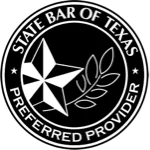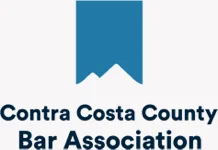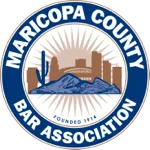If you’re not Big Law, your website shouldn’t feel like you are.
When we consult with solo practitioners and small firms, many point to Am 100 and 200 websites for inspiration. We get it, they’re pretty and powerful!
But mimicry can be a problematic approach. There’s a better way to enjoy the benefits of an Am 100 firm’s excellent technique without suffering the pitfalls of replicating a design that’s built on serving entirely different business goals.
Let’s dive into why Big Law sites are so enticing and three key differences between you and Big Law that should inform your own website design strategy.
There’s a lot to admire about Big Law
We understand the desire to mimic Big Law that small firms often experience. You gaze at the giants of the Am 100 and 200 and think, Why not project an image larger than our current scale?
Your desire to exude credibility and ambition is well-placed. After all, major firms flaunt incredibly high-quality design on their websites, delivering excellent user experience and visual flair.
It’s true that a user-friendly site can leave a lasting impression and help grow your business—and a visually stunning and user-friendly website isn’t a luxury exclusive to the elite.
By observing and learning from the design elements on Am 100 sites, smaller firms can enhance the aesthetics and functionality of their websites.
But mimicry? We don’t recommend it.
But you can’t just copy and paste
It’s important to understand that, for a small firm, the target consumer and the attorney selection process usually are not aligned with Big Law. You could duplicate the Cadwalader site page for page but it might not work within your own niche of potential clients.
Difference 1: Am 100 and 200 websites have enormous budgets
Let’s be frank, you probably don’t have $100,000+ to splash out on the cost of a new legal site.
The truth is that larger firms have more financial resources to implement and maintain advanced features on their websites, whereas smaller firms may lack the budget and human resources to replicate these features successfully.
Attempting to mimic the digital strategies of larger firms without considering resource constraints can lead to frustration and suboptimal outcomes. It’s like signing up for a tightrope competition without a pole, expecting equilibrium without the necessary tools for stability.
Smaller firms should focus on strategies that align with their budget and capabilities while still delivering a strong online presence.
Difference 2: Persona and audience development matter more for smaller firms
This one is major, so pay attention.
You are not competing with Am 100 firms for business.
Your target clients are not their target clients!
Your persona and audience development process should be very different from that of an Am 100 firm.
Here’s an example. Say you’re a small law firm on Main Street and you serve families in your local community.
Your clients likely care more about accessibility and access to their lawyer than finding a “big firm.” These clients want to know with whom they’re sharing their personal data and struggles. Your target market doesn’t want to feel nickel and dimed for every photocopy and every minute spent talking.
When small firms try to mimic Big Law, they often fail to appeal to the right audience. Smaller law firms often have a more niche focus or cater to a specific local audience. Copying the content, tone or approach of a larger firm’s website tends to result in a misalignment with the unique persona and audience of a smaller firm.
Difference 3: Smaller firms’ websites need to generate more leads (via better SEO) than larger firms
Major firms just don’t need to generate as much new business from their websites as you do.
You cannot yet rely on your reputation to attract clients, so your website needs to work much harder at lead generation.
To achieve strong lead gen, small firms need to optimize their sites for local search with effective CTAs, conversion-based landing pages and targeted content for their specific practice area.
Am 100 sites are not the gold standard when it comes to optimization for lead generation.
If you replicate someone else’s generic, sterile copy and non-SEO-optimized site design and expect to generate leads, you’ll be guaranteed failure.
Final words
Chasing inspiration is always a smart move—but, hey, small firms, you’ve got your own flavor. Smaller firms should avoid directly copying larger firms’ digital approaches.
While drawing inspiration from larger law firms can provide valuable insights, it’s essential for smaller firms to tailor their digital strategies to their unique needs, audience and resources. Craft a site that screams “us” not “them.”
As a small firm, you’re more agile. This means you can adapt quickly to changes in the legal landscape, whereas larger firms might be weighed down by more bureaucratic processes and slower to adapt their online strategies.
A OneFirst data-driven site can help you balance emulation with strategic adaptation to ensure that your smaller firm can leverage best practices without falling into potential pitfalls that may arise from a one-size-fits-all approach. Ready to learn more? We got you.












